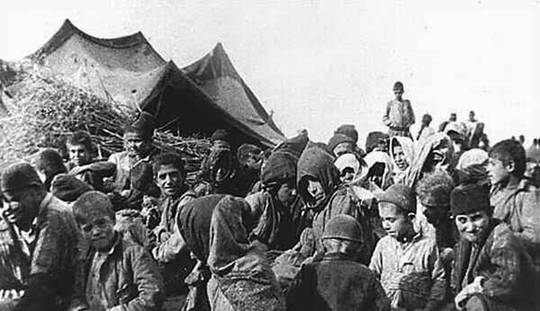
A. First year and statistics
During the decades of 1910 and 1920 the number of immigrants that resorted to Greece was huge, a disproportionate amount related to Greece's population. At the same time, lots of people from Greece that were part of different nations and religional groups left the country. The biggest immigration wave happened after the Anatolian destruction. About 1.200.000 immigrants arrived in Greece in a tragical condition. Most of them had left their houses in a hurry and could take with them only a few of teir movable goods. Lots of malnourished and subtly sheltered immigrants suffered from diseases and physicological problems. The death rate among refugees was very high, especially in the first months. According to LoN(League of Nations), the %20 of immigrants lost their lives in the first year of their arrival.

